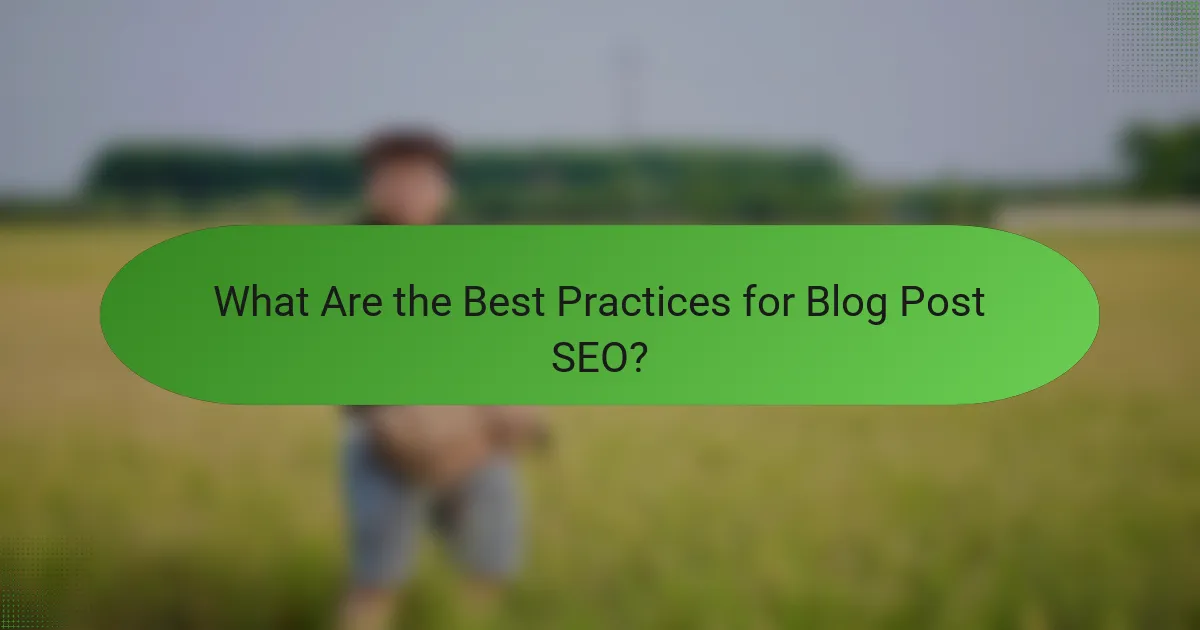Creating engaging blog posts requires a deep understanding of your audience’s interests and preferences. By selecting relevant topics and employing a clear structure, you can enhance readability and maintain reader interest. Additionally, fostering a connection with your audience through personalized content and interaction can significantly elevate their experience.

How to Write Engaging Blog Post Topics?
To write engaging blog post topics, focus on what resonates with your audience and sparks their interest. This involves understanding their preferences, using effective research tools, and analyzing current trends.
Identify audience interests
Understanding your audience’s interests is crucial for creating engaging blog topics. Conduct surveys, engage in discussions on forums, or analyze comments on your previous posts to gather insights on what your readers care about.
Consider creating reader personas that reflect different segments of your audience. This will help you tailor your topics to meet their specific needs and preferences, ensuring higher engagement rates.
Use keyword research tools
Keyword research tools help identify popular search terms related to your niche, guiding you in topic selection. Tools like Google Keyword Planner, Ahrefs, or SEMrush can provide insights into what potential readers are searching for.
Focus on keywords with a balance of high search volume and low competition. This strategy can help you create content that attracts traffic while standing out in search results.
Analyze trending topics
Keeping an eye on trending topics can inspire engaging blog post ideas. Use platforms like Google Trends, BuzzSumo, or social media hashtags to discover what is currently capturing attention in your industry.
When analyzing trends, consider how you can provide a unique perspective or add value to the conversation. This can help your content stand out and resonate more deeply with readers.
Leverage social media insights
Social media platforms are rich sources of information about audience preferences and trending topics. Monitor engagement metrics such as likes, shares, and comments to identify what content resonates with your followers.
Engage with your audience through polls or questions on social media to gather direct feedback on potential blog topics. This can help you create content that is not only relevant but also highly engaging for your readers.

What Structure Enhances Blog Post Engagement?
A well-structured blog post significantly boosts reader engagement by making content easier to digest and more appealing. Key elements include compelling headlines, subheadings, bullet points, and visuals, all of which work together to enhance clarity and maintain interest.
Use compelling headlines
Compelling headlines grab attention and entice readers to click on your post. Aim for headlines that are clear, intriguing, and relevant to your audience’s interests. Incorporating numbers, questions, or strong adjectives can make your headlines more engaging.
For example, instead of “Tips for Writing,” consider “10 Essential Tips for Writing Engaging Blog Posts.” This approach provides a clear value proposition and sets expectations for the reader.
Incorporate subheadings
Subheadings break up text and guide readers through your content, making it easier to skim and find relevant information. Use descriptive subheadings that reflect the content of each section, helping readers navigate your post quickly.
For instance, if your blog post covers various aspects of digital marketing, subheadings like “SEO Strategies” and “Social Media Tips” can clarify the topics being discussed, enhancing overall readability.
Utilize bullet points for clarity
Bullet points help distill complex information into digestible chunks, making it easier for readers to absorb key points. Use bullet points to list tips, steps, or important facts, ensuring that each point is concise and relevant.
For example, when outlining the benefits of a product, you might use bullet points to highlight features like “Cost-effective,” “User-friendly,” and “Versatile.” This format allows readers to quickly grasp the main advantages without wading through dense paragraphs.
Include visuals and multimedia
Incorporating visuals such as images, infographics, and videos can significantly enhance engagement by providing a richer experience. Visuals not only break up text but also help illustrate complex ideas, making them more accessible.
Consider using relevant images or charts that complement your content. For instance, an infographic summarizing key statistics can effectively convey information that might be tedious in text form. Ensure that all visuals are high-quality and relevant to the topic at hand.

How to Connect with Your Blog Audience?
Connecting with your blog audience involves understanding their needs and preferences, fostering interaction, and personalizing content. By focusing on these elements, you can create a more engaging and relevant experience for your readers.
Understand audience demographics
Knowing your audience demographics is crucial for tailoring your content effectively. Consider factors such as age, gender, location, and interests, as these can significantly influence what topics resonate with your readers.
Utilize tools like Google Analytics or social media insights to gather data about your audience. This information can help you identify trends and preferences, allowing you to create content that speaks directly to your target demographic.
Encourage reader interaction
Encouraging reader interaction can enhance engagement and build a community around your blog. Ask open-ended questions at the end of your posts to invite comments and discussions.
Consider incorporating polls or surveys to gather feedback on topics your audience wants to see. Responding to comments and engaging with readers on social media platforms can also foster a sense of connection and loyalty.
Personalize content for relatability
Personalizing content makes it more relatable and engaging for your audience. Use storytelling techniques to share personal experiences or anecdotes that align with your blog’s theme.
Additionally, segment your audience based on their interests or behaviors and create tailored content for each group. This approach can lead to higher engagement rates and a stronger connection with your readers.

What Are the Best Practices for Blog Post SEO?
Best practices for blog post SEO focus on optimizing content to improve visibility in search engine results. This involves strategic keyword usage, effective linking, and crafting compelling meta descriptions.
Optimize for relevant keywords
To optimize for relevant keywords, identify terms and phrases that your target audience frequently searches for. Use tools like Google Keyword Planner or SEMrush to discover popular keywords related to your blog topic.
Incorporate these keywords naturally into your content, including headings, subheadings, and throughout the body text. Aim for a keyword density of around 1-2% to avoid keyword stuffing, which can harm your SEO.
Implement internal linking strategies
Internal linking involves connecting your blog posts to other relevant content on your site. This not only helps search engines understand the structure of your website but also keeps readers engaged by guiding them to related articles.
When creating internal links, use descriptive anchor text that reflects the content of the linked page. Aim to include 2-5 internal links per post, ensuring they are relevant and enhance the reader’s experience.
Utilize meta descriptions effectively
Meta descriptions are brief summaries of your blog posts that appear in search engine results. A well-crafted meta description can significantly increase click-through rates, so it should be concise and compelling, ideally between 150-160 characters.
Include your primary keyword in the meta description and create a sense of urgency or curiosity to encourage clicks. Avoid duplicating meta descriptions across multiple posts to ensure each one is unique and relevant to its content.

What Metrics Indicate Blog Post Success?
Key metrics that indicate blog post success include engagement rates, traffic sources, and conversion rates. These metrics help assess how well your content resonates with your audience and drives desired actions.
Track engagement rates
Engagement rates measure how actively readers interact with your blog posts. This can include metrics such as comments, shares, likes, and time spent on the page. High engagement rates typically indicate that your content is compelling and relevant to your audience.
To effectively track engagement rates, use analytics tools that provide insights into user behavior. Look for patterns such as which posts receive the most comments or shares, and consider the average time readers spend on each post. Aim for engagement rates in the range of 1-5% for social shares and comments combined, as this can signify strong reader interest.
Be cautious of common pitfalls like focusing solely on page views. While traffic is important, it doesn’t reflect how well your content connects with readers. Instead, prioritize metrics that show genuine interaction, and adjust your content strategy based on the insights you gather.
